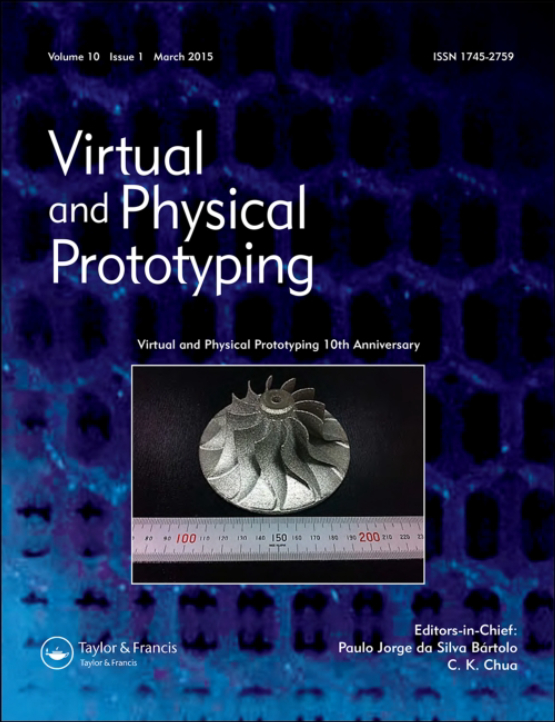Submit a Manuscript to the Journal
Virtual and Physical Prototyping
For an Article Collection on
Enhancing Additive Manufacturing Potential Through Post-processing Treatments
Manuscript deadline
31 July 2024


Article collection guest advisor(s)
Francesco Tamburrino,
Department of Civil and Industrial Engineering, University of Pisa, Italy
[email protected]
Enhancing Additive Manufacturing Potential Through Post-processing Treatments
Post-processing treatments are crucial in Additive Manufacturing (AM) to achieve desired product properties and address issues like roughness, dimensional accuracy, porosity, and anisotropy, which could otherwise limit the application of the parts.
There are two common strategies to tackle these challenges. The first approach optimizes process parameters during manufacturing, possibly incorporating additional treatments like supplementary heating during 3D printing. In-process optimization aims to get the final part in a single process, theoretically reducing working time. However, it has disadvantages, being closely tied to specific AM technology and potentially complicating the 3D printing hardware. Certain inherent characteristics of additively manufactured parts may only be partially addressed through in-process approaches.
In contrast, post-processing treatments offer more versatility compared to in-process strategies. They can be adapted to various AM technologies and materials. Even with optimized process parameters, critical issues may still affect the manufactured parts. Post-processing becomes crucial in these cases, enhancing 3D printed parts to achieve specific characteristics like metalized and conductive surfaces, transparent components, improved thermal resistance, higher thermal conductivity, and enhanced mechanical behaviour. The research community recognizes the significant importance of post-processing in improving the overall characteristics and expanding the application range of additively manufactured parts.
Despite progress in AM, critical issues remain that require attention in current and future research. Challenges include analyzing the effects on geometrical and dimensional stability and extending to a broader range of materials. Defining a clear roadmap and specific strategies for design in AM post-processing is needed. Post-processing of multi-material parts presents unique challenges, as does developing strategies for micro AM applications. Additionally, enhancing automation in post-processing techniques is essential to improve efficiency.
Addressing these open issues will significantly advance additive manufacturing and unlock its full potential across various industries. Continued research and collaboration among experts are necessary to overcome these challenges and pave the way for future advancements in AM technology.
The relevant subtopics and desired focus from manuscript submissions include but are not limited to:
- Post-processing for AM polymers, metals, and composites
- Post-processing for enhanced mechanical properties
- Post-processing for enhanced thermal properties
- Design for AM post-processing
- Post-processing for surface characteristics improvement
- Multi-material parts post-processing
- Post-processing for micro and macro AM products
- Automation and post-processing with AM
Keywords: Post-processing; Additive Manufacturing; Design for AM post-processing; Enhancement of Additive Manufacturing potential; Superior properties through AM post-processing
All manuscripts submitted to this Article Collection will undergo a full peer-review; the Guest Advisor for this collection will not be handling the manuscripts (unless they are an Editorial Board member). Please review the journal scope and author submission instructions prior to submitting a manuscript.
The deadline for submitting manuscripts is 31 July 2024.
Dr. Francesco Tamburrino is an Assistant Professor at the Department of Civil and Industrial Engineering of the University of Pisa and teaches the following subjects: Physical and Virtual Prototyping, and Materials for Design. The primary research interests of Francesco Tamburrino are mainly focused on additive manufacturing, with a particular emphasis on design methodologies tailored for additive manufacturing processes. He also investigates post-processing treatments for additively manufactured components, aiming to enhance their structural and functional properties. In addition to his work in additive manufacturing, Francesco Tamburrino is actively involved in industrial design, with a focus on lattice structures. His research spans the field of materials science and technology, where he explores novel materials, including materials for dental applications. He participated in several academic and industrial research projects and his research activity has been disseminated in international refereed journals and conferences.
Website: Francesco Tamburrino (unipi.it)
Benefits of publishing open access within Taylor & Francis
Global marketing and publicity, ensuring your research reaches the people you want it to.
Article Collections bring together the latest research on hot topics from influential researchers across the globe.
Rigorous peer review for every open access article.
Rapid online publication allowing you to share your work quickly.
Looking to Publish your Research?
Find out how to publish your research open access with Taylor & Francis Group.
Choose open accessSubmission Instructions
All manuscripts submitted to this Article Collection will undergo desk assessment and peer-review as part of our standard editorial process. Guest Advisors for this collection will not be involved in peer-reviewing manuscripts unless they are an existing member of the Editorial Board. Please review the journal Aims and Scope and author submission instructions prior to submitting a manuscript.